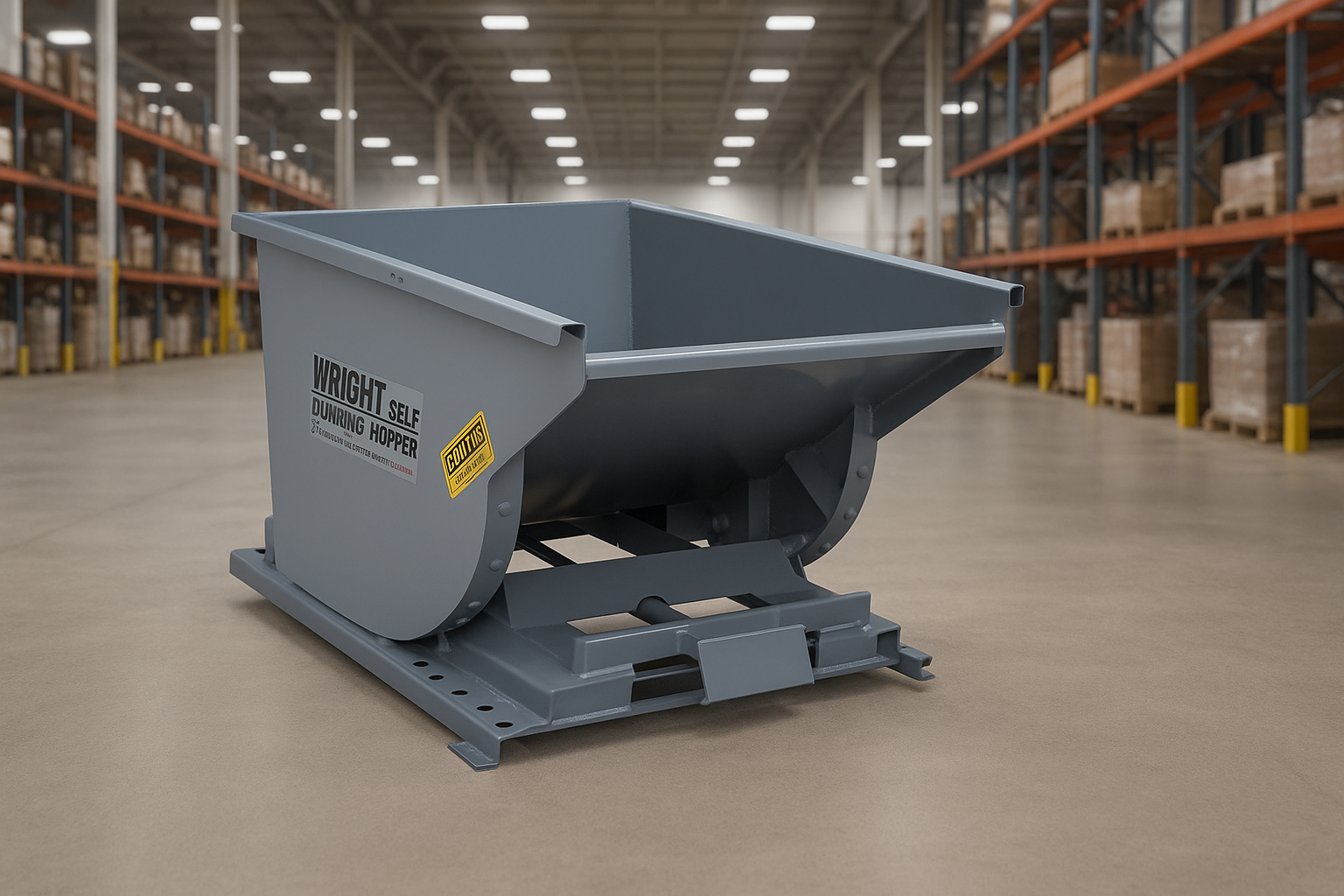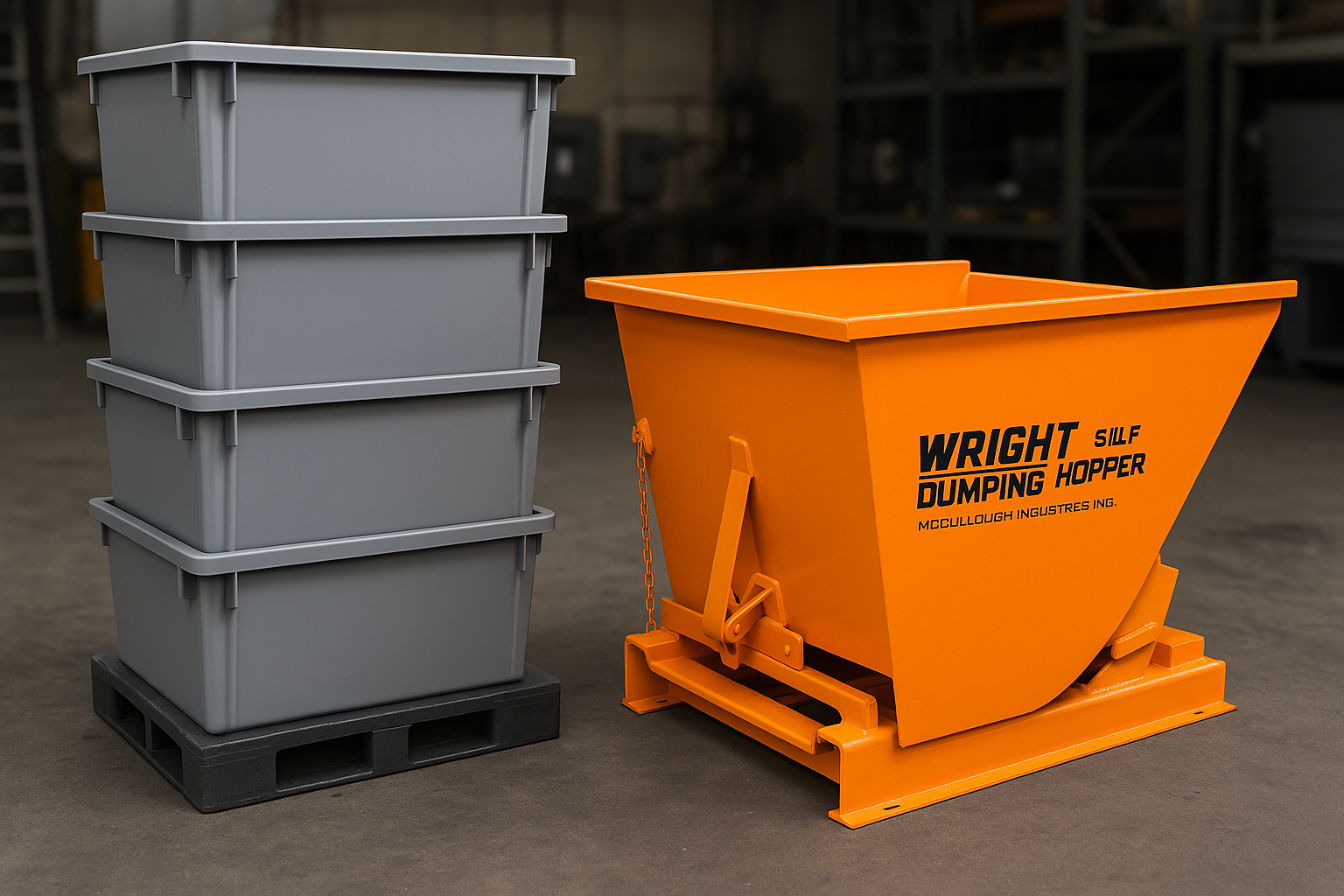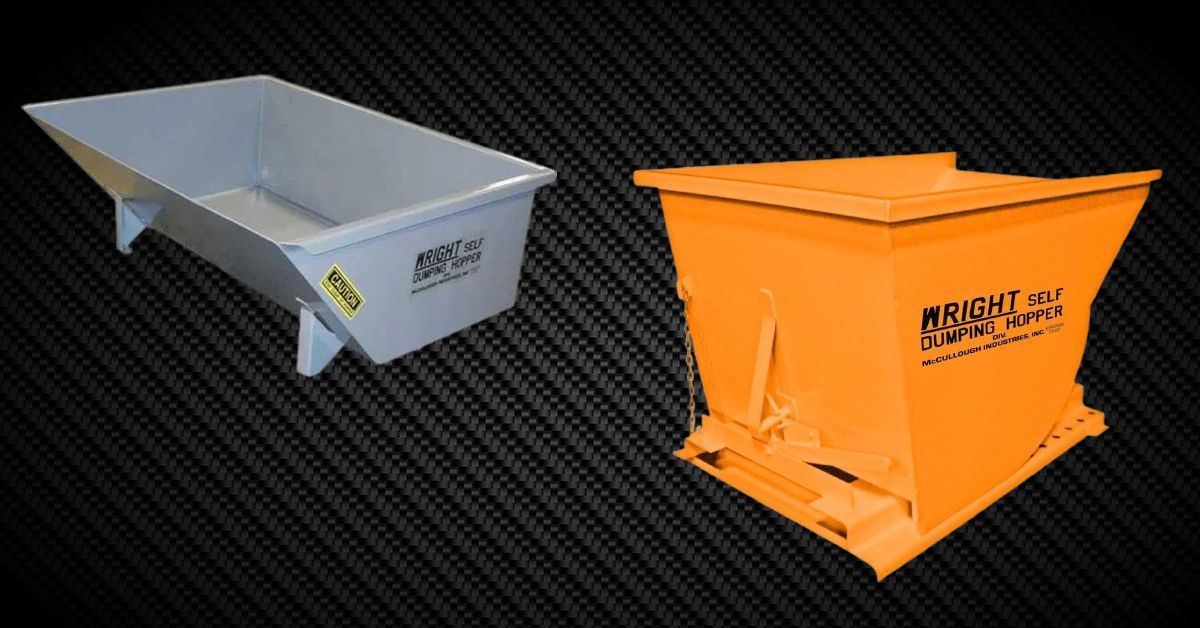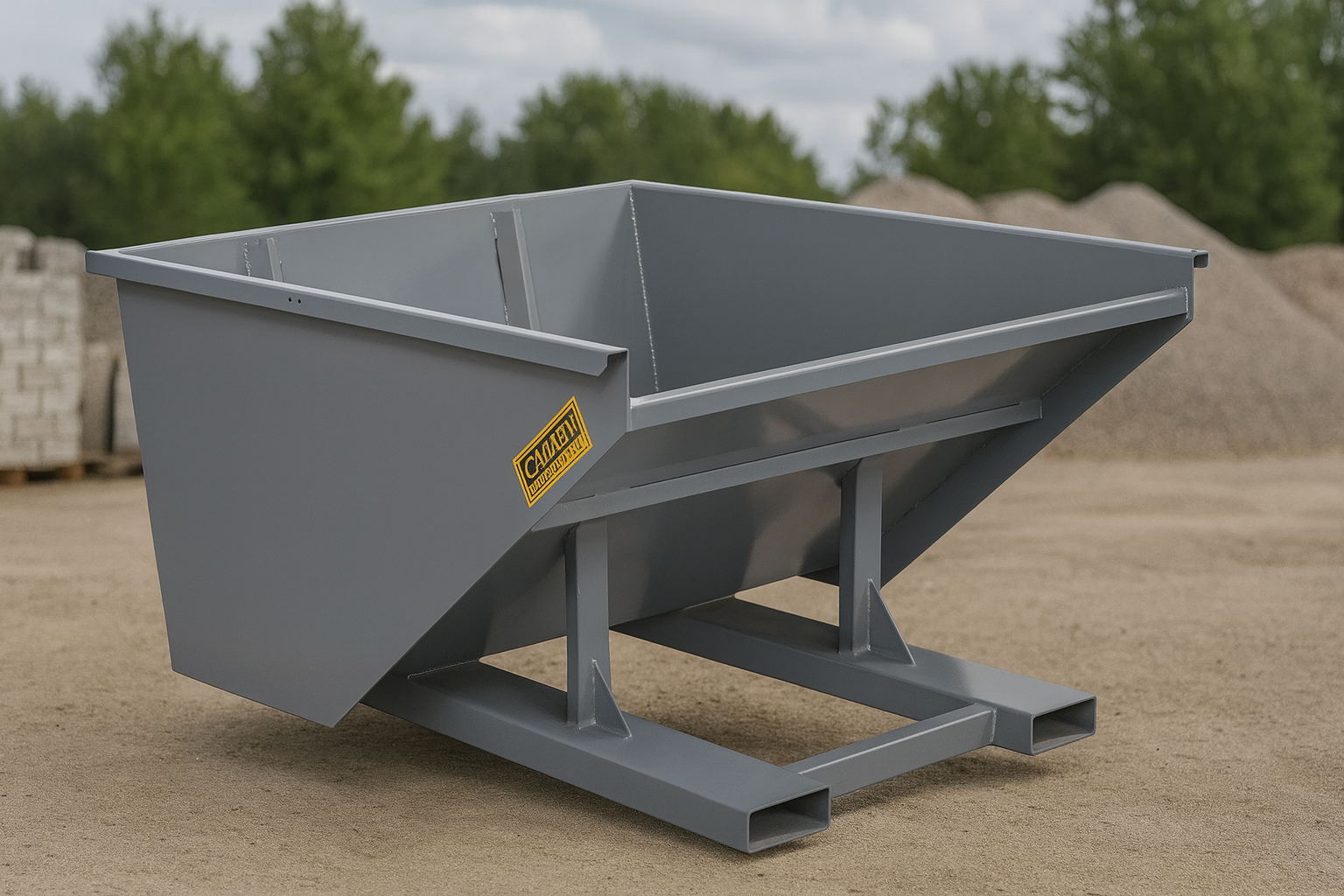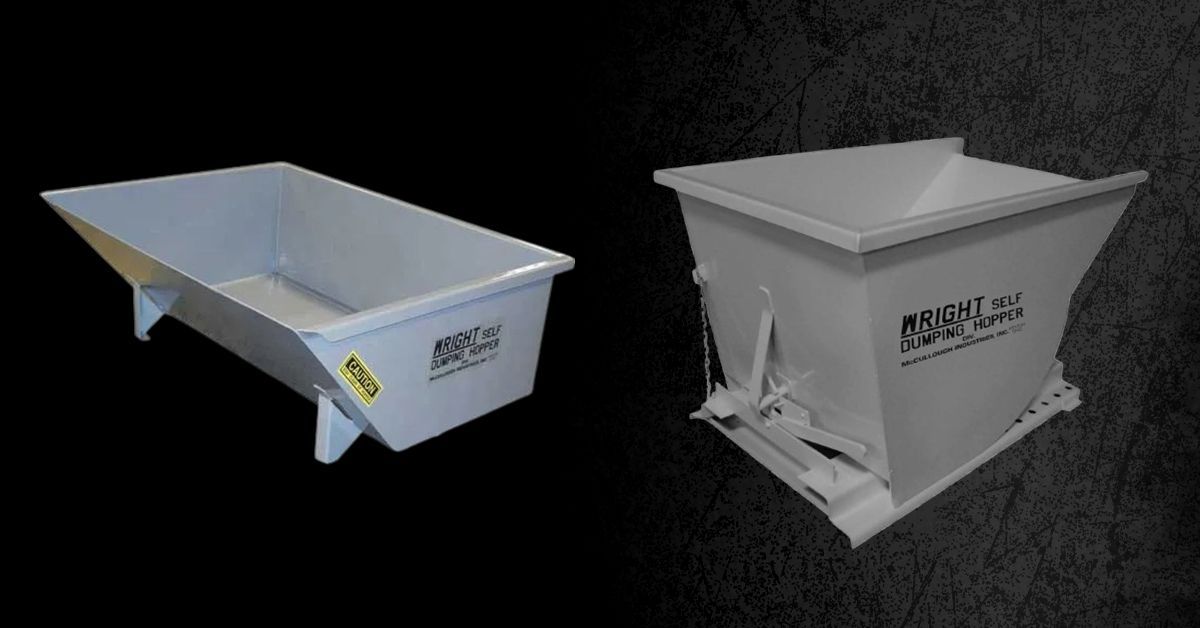
Understanding Hydraulic Flow in Wright® Quick Attach Hopper Systems
Hydraulic quick attach hoppers are revolutionizing how industries move, lift, and dump material in harsh environments. At McCullough Industries, our Wright® Quick Attach Hoppers are engineered for demanding field use and built to connect seamlessly with your equipment. But there's one factor that determines whether your hopper operates with precision or frustration: hydraulic flow rate.
Whether you’re working with a compact loader, skid steer, or utility tractor, the hydraulic flow rate of your host machine directly affects dumping control, safety, and performance. In this guide, we’ll explore why flow rate matters, how it interacts with Wright® hoppers, and what you need to know before you deploy a Quick Attach unit on your job site.
What Is Hydraulic Flow Rate?
Hydraulic flow rate, typically measured in gallons per minute (GPM), represents how much hydraulic fluid is moved through the system within a given time. In the context of a Wright® Quick Attach Hopper, this determines how quickly and smoothly the hopper will tilt, dump, and reset.
Too low of a flow rate can result in sluggish dumping or improper tilt angles. Too high, and you risk jerky motion, system strain, or even safety issues. That’s why MCI designs all Wright® Quick Attach Hoppers to work within a safe and efficient hydraulic range.
How Hydraulic Flow Affects Hopper Operation
When connected to your machine's quick attach plate, the hopper integrates with the onboard hydraulic circuit. The flow rate then determines:
- Tilt speed: How fast the hopper dumps
- Tilt control: How smoothly the load is released
- Cylinder longevity: Proper flow protects against seal failure or rod damage
- Operator safety: Controlled motion reduces tipping hazards
Every Wright® Quick Attach Hopper comes with dual hydraulic cylinders rated for the expected GPM range of compact machines. This ensures consistent, safe, and repeatable operation even in rough field conditions.
Recommended Flow Rate Range
While actual specs may vary by model and application, most Wright® Quick Attach Hoppers are built for machines with hydraulic flow between
8 to 20 GPM. Here's a breakdown:
| Machine Type | Typical GPM | Compatible Wright® Hopper Models |
|---|---|---|
| Compact Skid Steer | 10–14 GPM | QA-55, QA-100 |
| Mid-Frame Skid Steer | 14–18 GPM | QA-100, QA-150 |
| Utility Tractor | 8–12 GPM | QA-55 |
| High-Flow Loaders | 20+ GPM | Custom-configured models |
MCI also provides guidance on hydraulic coupler sizing, cylinder specs, and hose requirements to ensure smooth installation.
Why Flow Rate Impacts Safety
If the hydraulic flow rate is too high, it can result in:
- Sudden or uncontrolled tilting
- Overshooting the dump angle
- Damage to material, equipment, or bystanders
Too low, and your team might face:
- Incomplete dumping
- Prolonged cycle times
- Operator fatigue due to slow workflows
McCullough Industries calibrates each Wright® Quick Attach Hopper to match common GPM ranges while adding safeguards such as:
- Greaseable cylinder pivots
- Reinforced steel mountings
- Safety locking pins
Hydraulic Flow Rate vs. Pressure: What’s the Difference?
While related, flow rate and pressure are not the same. Flow rate (GPM) determines how fast the cylinder moves. Hydraulic pressure (PSI) determines the force applied. For Wright® hoppers, the balance between these two determines smooth, safe dumping.
All of our cylinders are rated for the PSI delivered by most standard compact and utility loaders. However, we recommend machine operators confirm both PSI and GPM before attaching a hopper.
When to Consider Flow Limiting or Restrictors
In some cases, especially with high-flow skid steers, it may be necessary to add a flow restrictor or control valve. McCullough can pre-install or provide guidance on integrating these components to regulate flow and extend equipment life.
Installation Considerations for Hydraulic Quick Attach Hoppers
To get the most from your Quick Attach Hopper, ensure:
- Your loader’s auxiliary hydraulics are compatible with dual-action cylinders
- Quick connect fittings match our standard hose ends (or we custom-fit them)
- There’s proper hose routing with guards to avoid pinching
- The operator has access to cab controls for safe tilting
All Wright® Quick Attach Hoppers include pre-tested hydraulic lines, cylinders, and mounts.
Customization Options Based on Flow Rate
For operations with special requirements, we offer customizations such as:
- High-capacity cylinders for faster tilt
- Flow control valves
- Larger hoses for increased fluid volume
- Temperature-rated components for hot or cold conditions
Our engineering team works directly with you to spec the best hydraulic configuration for your use case.
FAQs About Hydraulic Flow Rate and Wright® Quick Attach Hoppers
Can I use a Wright® Quick Attach Hopper on any skid steer?
Not all skid steers are compatible. Check your machine’s GPM and PSI ratings to ensure they align with the recommended ranges.
What happens if my machine has too high of a flow rate?
You may experience fast, jerky dumping that can damage the hopper or reduce operator safety. Flow restrictors are advised.
Do you offer assistance with setup or spec verification?
Yes, our engineering team will help match the right model to your equipment specs.
Can I switch the hopper between machines with different flow rates?
It’s possible, but you may need flow adjustments or customized fittings.
Is a custom-built hopper required for high-flow machines?
In some cases, yes. We offer custom hoppers for machines producing over 20 GPM.
Let’s Build the Right Hydraulic Solution
At McCullough Industries, we don’t just sell hoppers - we engineer performance. Choosing the right hydraulic flow rate for your Quick Attach Hopper is the difference between smooth efficiency and daily frustration. Our Wright® product line is built to handle real-world demands with the specs to match.
Contact our team today to get a quote or request a custom configuration. We’ll help you spec the best-fit solution so your team can work faster, safer, and smarter.

